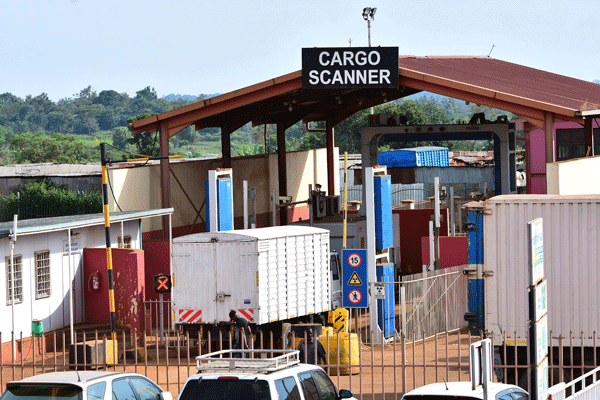Prime
How to test-drive a used car

Test-driving a car is good since you will be able to get first hand experience operating the car. In case of any faults, you are able to bargain for a lower price. Photo/www.GETTYIMAGES.COM
What you need to know:
One of the most important steps when you buy a used car is taking a test-drive. A thorough test drive is how you find out if the vehicle is right for you.
A number of potential buyers are quick to pay for a used car before knowing its mechanical condition. However, although the car might appear to be in good condition, there are other important aspects to find out.
For instance, last year, Fredrick Ofwono bought a used Mercedes Benz Kompressor from a car broker he was recommended to by a friend. Ofwono says although he was able to afford the Shs18m cost, he asked to first test-drive the car for two days to familiarise himself with its condition. He adds that after driving from Kampala to Jinja, on the second day, with the help of a trusted mechanic, he discovered that the previous owner had used spacers to improve the car’s ground clearance.
“I discussed this with the broker, especially since he had insisted that the car had not been tampered with. Although it was well raised, my concern was that spacers compromise the stability of the car at certain speeds and I wanted them removed. Knowing that this would cost me more money, I bargained with the broker until we reached a mutual understanding on the cost of the car,” Ofwono says.
Third party
Alex Kadoli, a mechanic, says when testing-driving a used car, have an independent third party, especially a mechanic, check the car before sealing the deal.
“A trained mechanic will help you diagnose the problem from the sound the car makes and the smell it produces from different parts,” Kadoli explains.
Like Ofwono, Kadoli adds that you should not only test-drive the car on a highway but also on marrum and tarmacked roads to understand its performance, especially its fuel consumption. Driving the car on marrum roads will help you understand the strength of the car suspension system, especially the shock absorbers as well as noticing the difference in fuel consumption in high traffic areas and on the highway.
Moses Jjuuko, a mechanic, says as you test-drive a used car, remember to accelerate to safer speeds not exceeding 100km/hour to find out how the car behaves at such speeds. There are some cars that have underlying mechanical problems that you will not notice when driving in traffic congested areas.
“Some car steering wheels will shake while driving while in some, the engine will vibrate upon going above certain speeds. It is safer to find out such faults to gain a better bargaining position since you will have to incur other costs to fix these problems,” Jjuuko explains.
Braking efficiency
Not only should you check out the braking efficiency of the car, where you should be concerned when the car vibrates as you brake, but you should also drive the car using all its gears if it is manual and reverse mode. The gears in both the manual and automatic modes, Jjuuko advises, should be able to engage without any grinding sounds, especially for manual cars.
Jimmy Ssebadduka, a mechanic, recommends driving while observing through the driving mirror for signs of any dark-coloured smoke from the car exhaust, especially when accelerating. When the car emits black, blue or white smoke, it is a sign that something is not right.
According to liveabout.com, while the car is parked, walk around it. Look for chips in the windshield or excessive body wear. (There will be some chips and scratches on almost all used vehicles.) Lots of chips and scratches along the wheelbase could indicate that the vehicle was driven in less-than-ideal conditions. Ensure that the tyres are properly inflated.
“Open the boot. Does it fulfil your storage needs? Place a grocery bag to see if it fits. Also, look for signs of leaks. Ask if the back seat folds down for more space and then make sure that it does,” the portal says.
If there is air freshener hanging from the rear view mirror, the portal recommends putting it in the glove compartment and once you are through with driving, give the vehicle a good sniff test. You should not be afraid to put your nose to the seats to see if any odours have sunk in. Look over the interior for any spots or stains.
The Money Advice Service, an online portal, recommends pulling out the engine oil dipstick, wiping it clean with a cloth and re-inserting it. Pull it out again and check if it is at the maximum level and the oil itself is golden and clear.
“If not, the car is probably due for service, a possible bargaining point. However, if it is a diesel, the oil can become dark soon after an oil change,” the portal says.
It concludes that before starting the car, check underneath the engine oil cap for a thick white substance which could indicate a problem with the head gasket or engine damage.
Pay special attention to transmission, brakes
If the transmission feels like it is jerking or shifting late, that is a giant red flag. Although some used cars can have their transmission mounts wear out, a lot of used cars, especially higher-mileage cars with continuously variable transmissions (known as CVTs), are notorious for their short life and high replacement cost.
When it comes to the brakes, give the owner a heads-up, and then firmly test them out. The feel should be linear and consistent. If the brakes vibrate or have a squealing sound, either the brakes need to be replaced or have already been replaced with cheap components.
Probability. According to research released by AA Cars, 29 per cent of buyers bought a ‘nearly new’ car most recently, compared to the 26 per cent who opted for a brand new car and 25 per cent who bought a used car that was more than five years old.
In total, 74 per cent of drivers said their most recent vehicle purchase was a used car.




